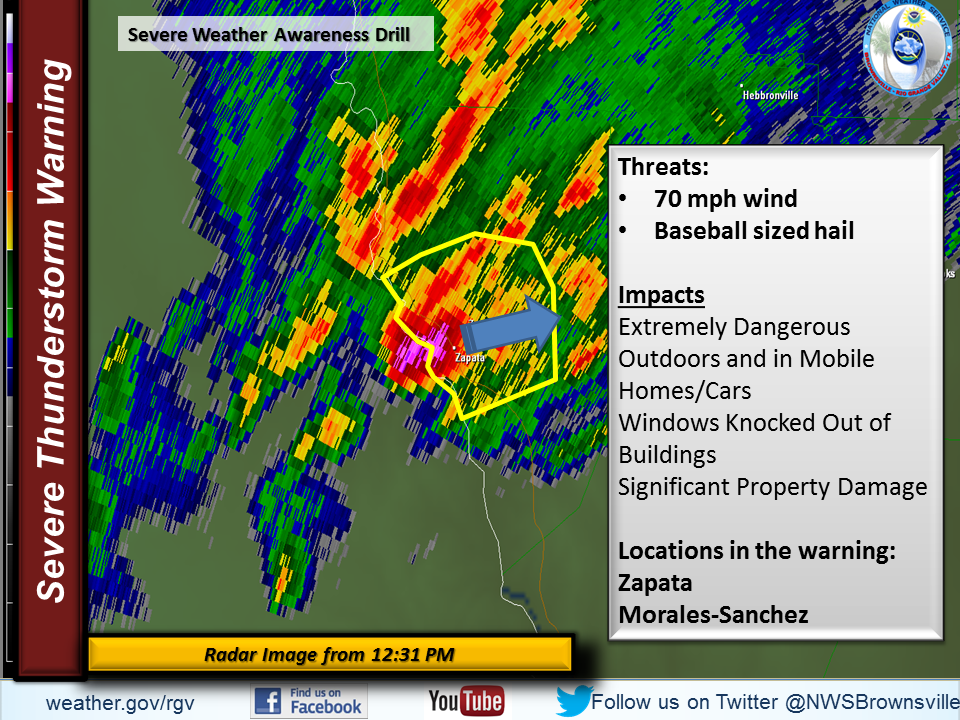Updated Info
12:31 p.m
Once a warning has been issued and you have taken action to protect yourselves there are several ways to stay informed. The National Weather Service will issue frequent follow up statements while severe storms are ongoing. These statements will tell whether the storm has strengthened or weakened, changed directions, and it's current location and movement. Here is an example of a Severe Weather Statement. In this case, the storm has not changed much in intensity but it is almost to Zapata!
The office might issue an updated radar graphic like this one:

What’s Important?
First, think about how little time elapsed between the initial warning, and when the storm actually arrived. Only about 10 to 15 minutes! Thats why it is important to move quickly if you are in the warning!
Second, be alert for new information. Local TV and radio stations may provide updates on the air, and the NWS, as well as media partners will provide updated information via social media. NOAA Weather Radio will also play any Severe Weather Statements, or new warnings immediately and on a continuous loop.

